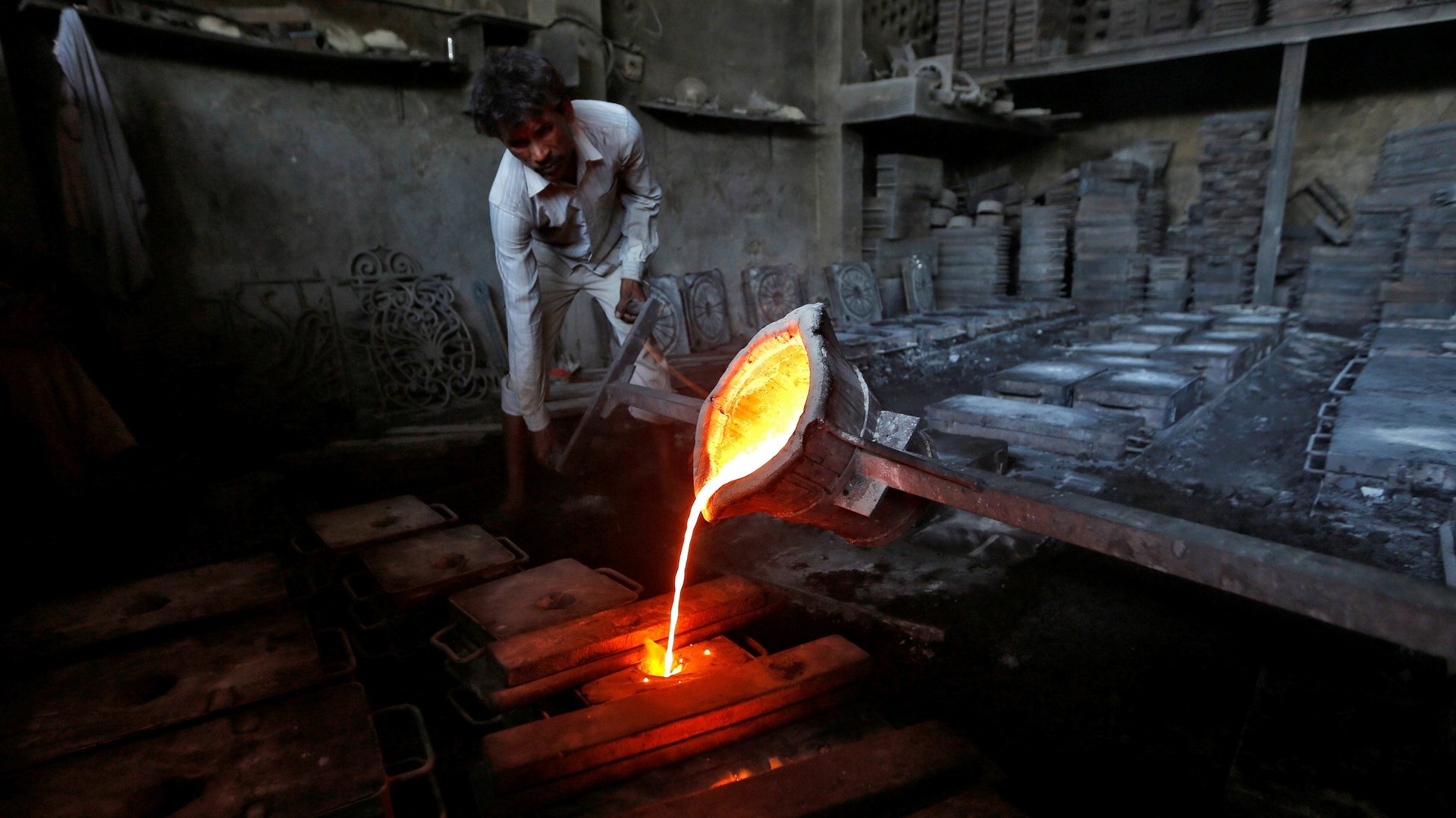To counter the economic slowdown, India first needs to fix its doubtful GDP numbers
The Narendra Modi government has had a pretty dubious track record of estimating and calculating India’s economic growth, and the pandemic may make things worse.


The Narendra Modi government has had a pretty dubious track record of estimating and calculating India’s economic growth, and the pandemic may make things worse.
For a government that made several tweaks to its economic growth numbers in the past two financial years—and frequently missed projections—this year has come with an additional challenge. The government is likely to have struggled with data collection, particularly during April and May when the country was under lockdown to curtail Covid-19, said Sumit Shekhar, associate economist at Mumbai-based brokerage firm, Ambit Capital.
Economists are pretty certain the government will trim its initial estimates for India’s gross domestic product (GDP) growth for this financial year—just like it did for 2019 and 2020. On May 4, news reports claimed that the government has estimated India’s GDP to expand 2-3% in the year ending March 2021.
But post the pandemic outbreak, the situation is so uncertain that even India’s central bank has not been able to quantify the deceleration of the GDP. All that the Reserve Bank of India’s (RBI) monetary policy committee has said so far is that the economic growth will be in “negative zone” (pdf) during the current financial year.
This lack of clarity over India’s growth projections can be a major hurdle for companies that are dealing with one of the worst economic slumps, and for the government itself, as a lot of the policy decisions hinge on these estimates.
“Whichever way the revisions go, given the heightened uncertainties on various fronts, the revisions are likely to be larger than usual, which will be problematic for business planning and policy-making,” said professor Rupa Chanda, RBI chair professor of economics at the Indian Institute of Management, Bangalore (IIM-B).
It’s all wishy-washy
For nearly half a decade, India’s GDP numbers have been marred in controversies even as prime minister Modi extensively projected the country—at home and abroad—as the fastest-growing economy in the world.
To support this opinion, Modi and his ministers tinkered with the GDP calculation method in 2015 by changing the base year. The government included a controversial data set, which had never been used before, in its calculation of the country’s GDP.
Last year, between April and December, the government flipped its GDP growth estimates for the financial year 2020 multiple times.
India also missed the government’s growth projections by a large margin in the financial year 2020.
In July 2019, finance minister Nirmala Sitaraman had said India’s GDP would grow by 8-8.5% during the year, but according to the data released by the government on May 29, the country’s economic growth was at a meager 4.2%. The impact of the Covid-19 lockdown was felt for just one week of March and hence it can’t be used as an excuse.
Also, this isn’t the first time when GDP figures fell significantly short of estimates.
This raises doubts about the Modi government’s sincerity to share honest estimates in the first place.
The Indian government has time and again been warned about the shortcoming of GDP projections. Criticism has even come from those who have earlier worked with Modi. For instance, last year, India’s former chief economic advisor Arvind Subramanian in a research paper noted that the country overestimated its GDP by 2.5% between 2011 and 2017.
The bumping up of GDP numbers might be good politics, but it’s surely bad economics.
Companies’ conundrum
Experts believe that frequently changing the GDP numbers hampers companies’ decision-making process and erodes business confidence over time.
For example, if a fast-moving consumer goods player believes that India’s consumption is set to drive economic growth, it will increase its capacity. Similarly, an infrastructure player will buy more machinery and equipment expecting that the higher GDP growth will lead to the initiation of more projects.
But if the reality doesn’t match up to the projections, these additional capacities and assets lie unused and can turn into liabilities.
“Frequent revisions and doubts over the quality of our economic data make it difficult for companies to plan their strategies,” said Chanda. “In this case, they would have made capex decisions based on a more optimistic growth projection, only to now find that the growth outlook is much worse and that they should have planned less capacity expansion.”
The frequent changes in projections, in fact, even cripple the government.
Policy confusion
From borrowing to spending, many of the government’s decisions hinge on GDP projections and actual figures.
“Macro-economic indicators such as fiscal deficit and current account deficit are calculated as a ratio of nominal GDP. A frequent revision in the GDP data poses the question on policy decisions made using the old and inaccurate data,” Shekhar said.
A key issue with the government’s estimates is that it overestimates tax receipts and underestimates its expenditures, which renders the fiscal deficit target pointless, Chanda of IIM-B said.
In July 2019, India had set a fiscal deficit target of 3.3% of the GDP for the financial year ending March 2020, which it missed and finally settled for 4.6% due to a revenue shortfall.
“Repeated deviations from projected deficit targets, lead to increased borrowing,” Chanda said. “One has to discount the budget projections as a result. This casts doubt on the entire budgetary process and also complicates the task of inflation and interest rate management on the part of the RBI.”
In these tough economic times, such a “poor fiscal marksmanship” can cost India much more than it did in the previous years.